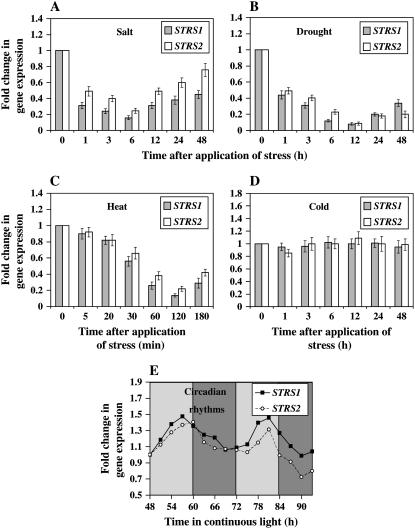Figure 7.
Stress-responsive and circadian clock-controlled expression of STRS1 and STRS2. Two-week-old wild-type soil-grown plants were exposed to various stress treatments. Relative transcript levels were determined by real-time PCR according to the 2−ΔΔCT method using UBQ10 as an internal control (Livak and Schmittgen, 2001). Expression was normalized to the unstressed expression level of the respective gene, which was assigned a value of 1. Data represent the average of three independent experiments ± sd. A, Salt treatment; 200 mm NaCl. B, Drought treatment; plants were removed from the soil and allowed to dry under 60% humidity. C, Heat treatment; 40°C. D, Cold treatment; 4°C. E, Circadian clock control; 7-d-old wild-type seedlings were entrained in a 12-h-light:12-h-dark photoperiod for 4 d and then released into continuous light. Data are representative of similar results from two independent experiments. Light and dark shaded bars represent subjective day and subjective night, respectively.

